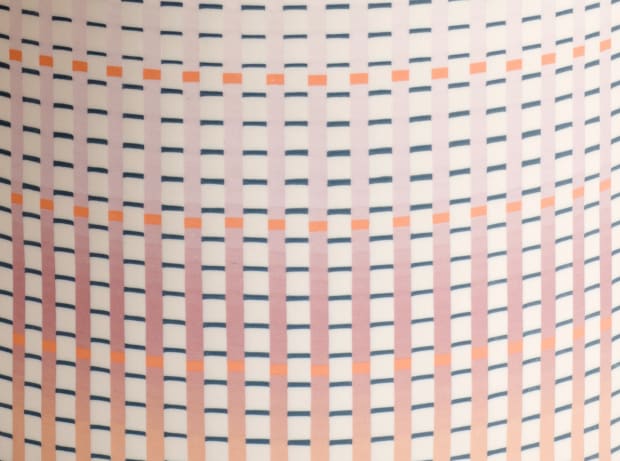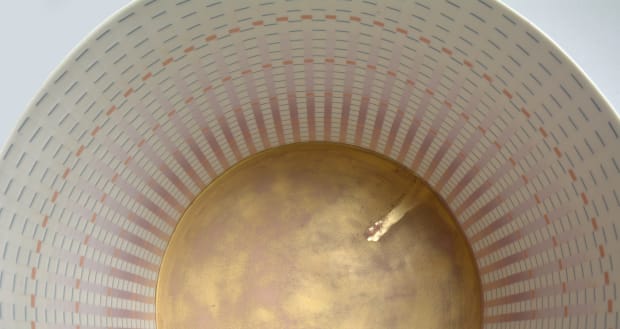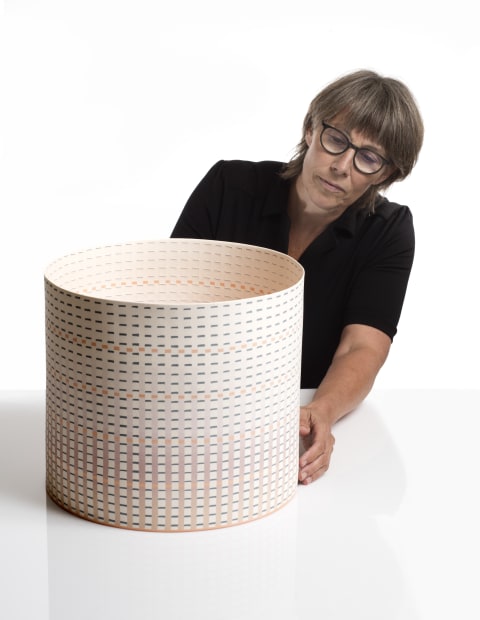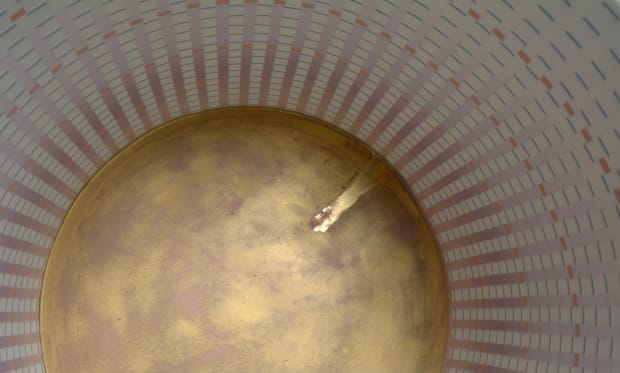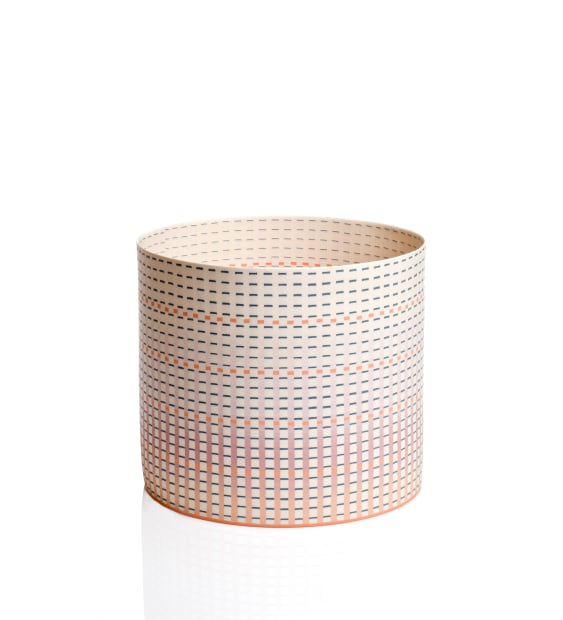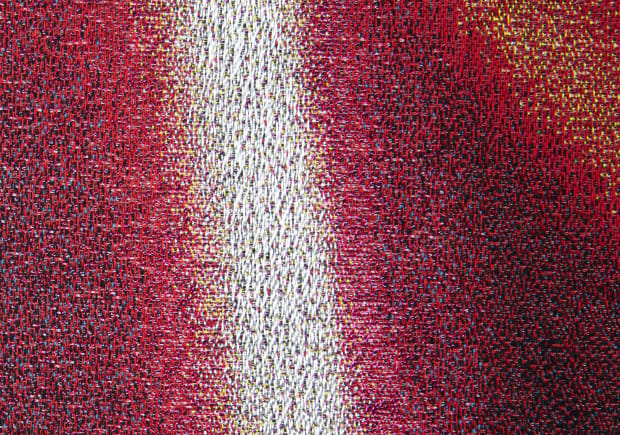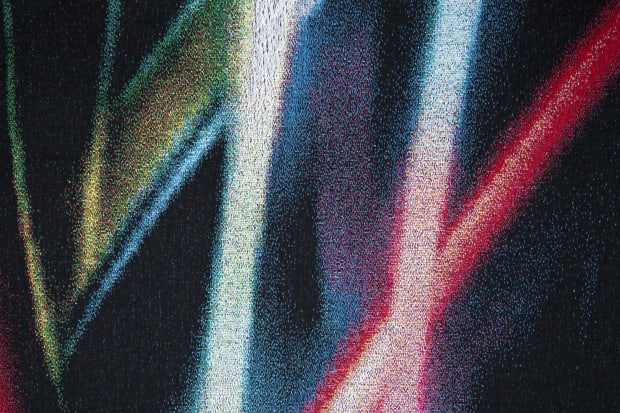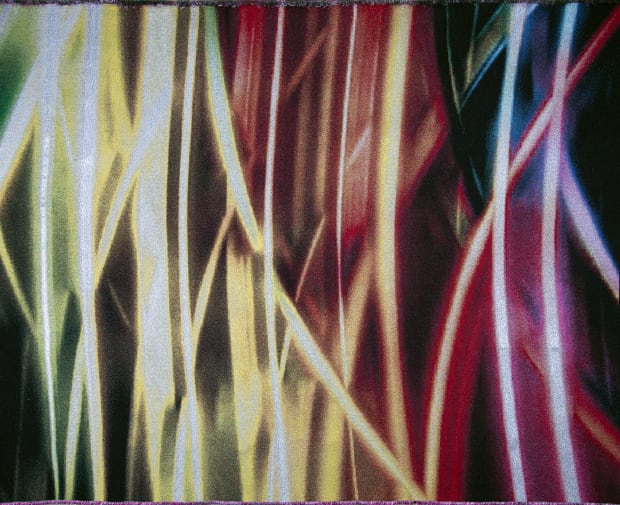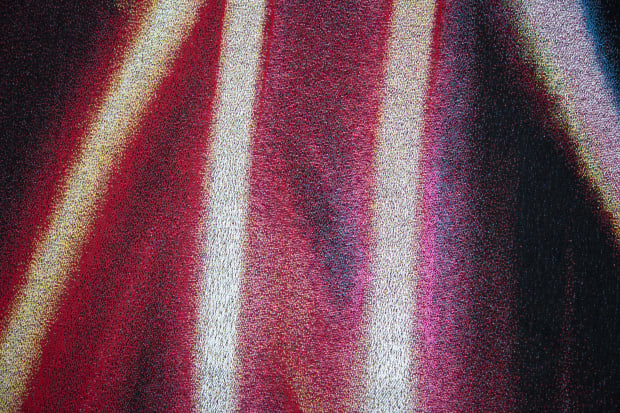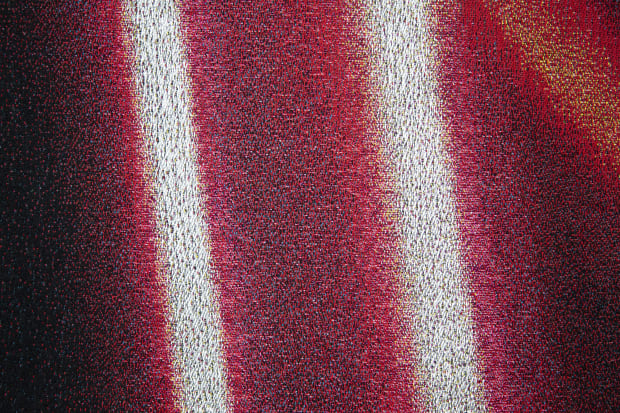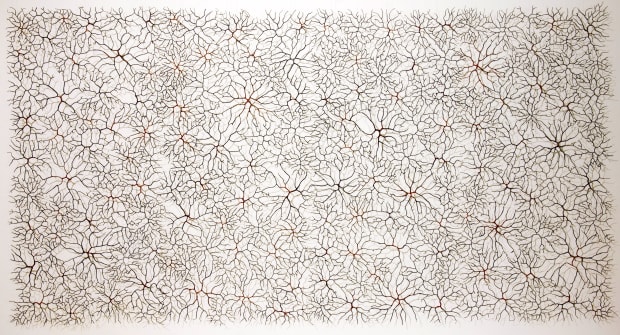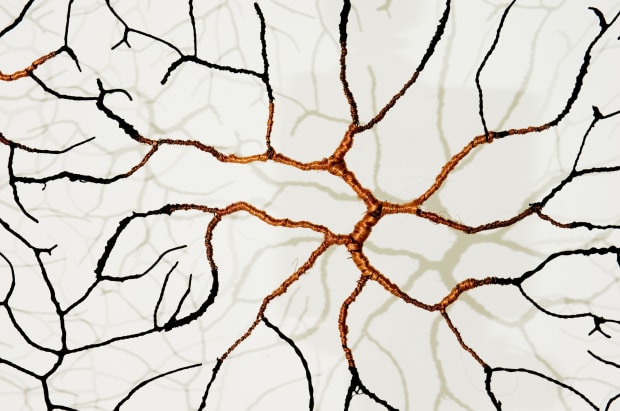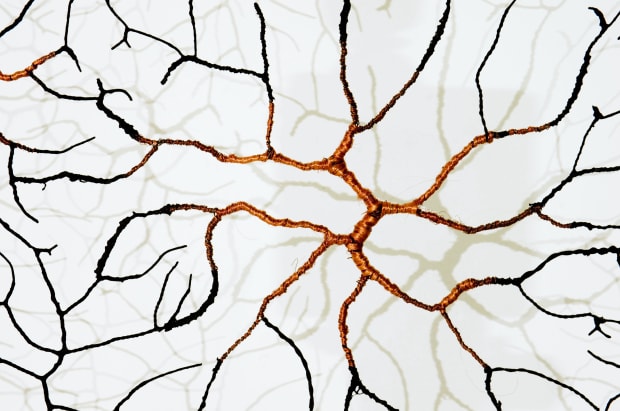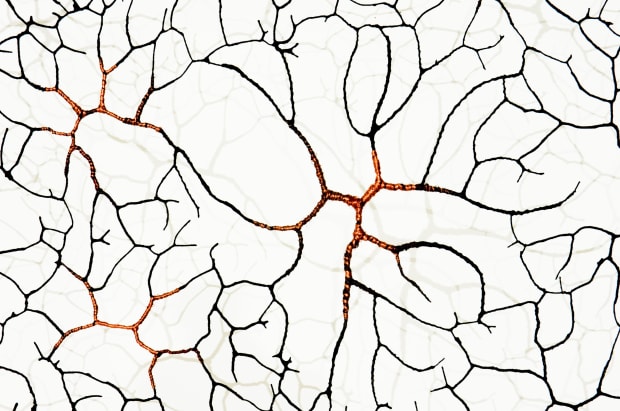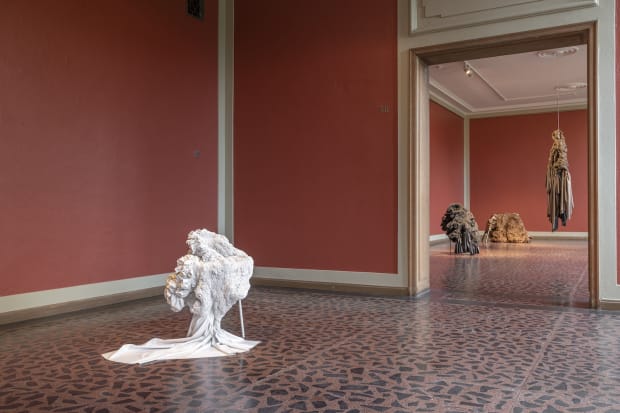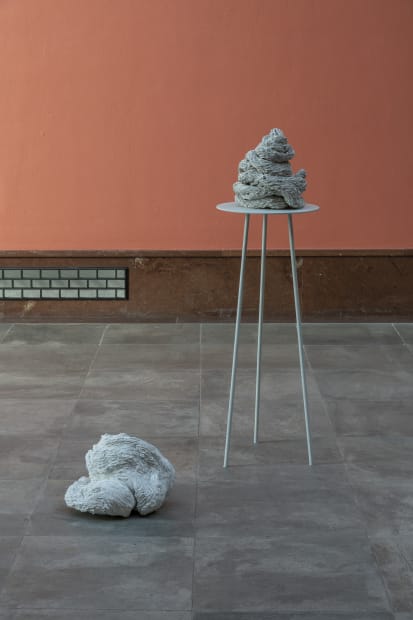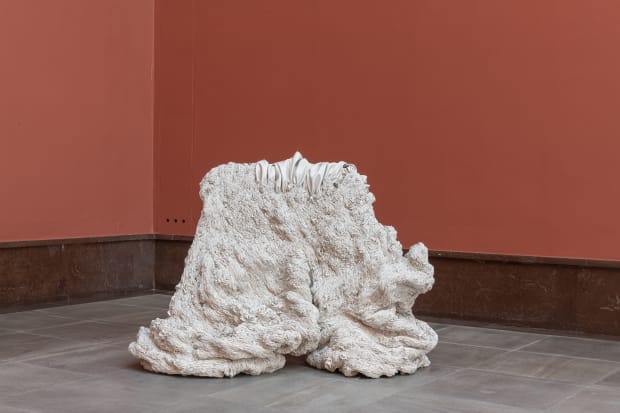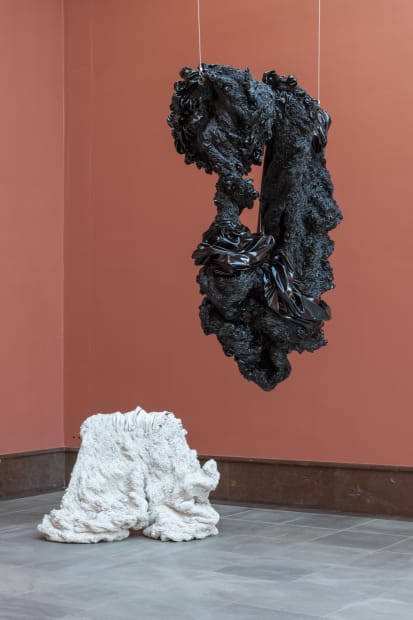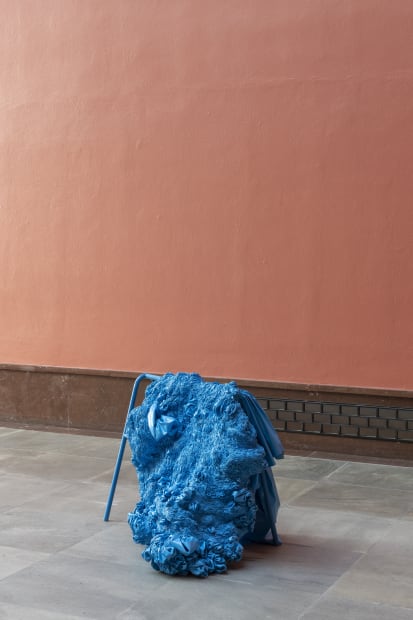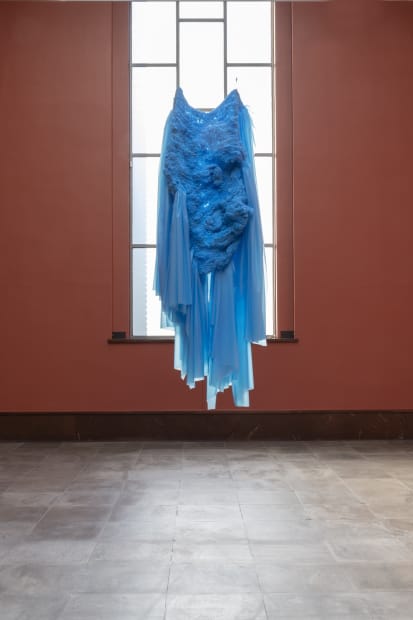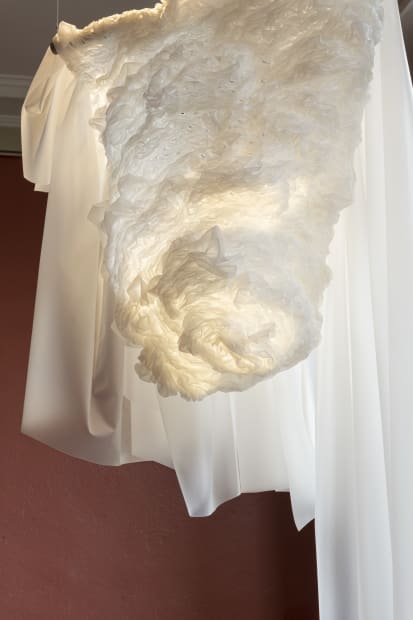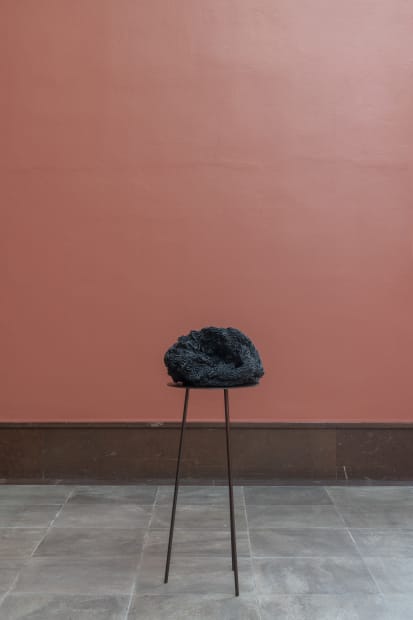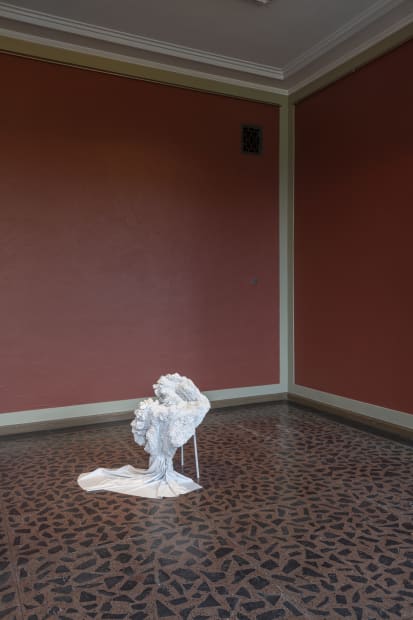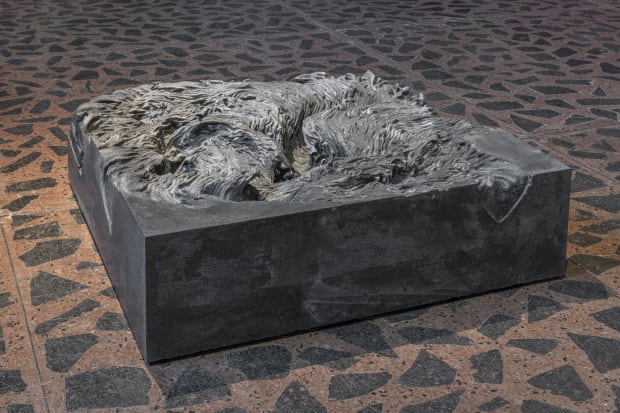-
 News
NewsMuseum Acquisition
Signe Emdal by Danish Art Foundation Jul 1, 2024Galerie Maria Wettergren is delighted to announce that Signe Emdal’s important textile sculpture, Infinity Root, 2021 has been acquired by the Danish Art Foundation in Copenhagen, Denmark.The textile sculpture Infinity Root is a poetic symbol of “the root of all life”. This work is the result of Signe Emdal’s fascination with mechanisms of plant communication and collaboration strategies, through touch and sight senses. The sensitivity of the plant systems is extraordinary, and often invisible to the human eye. The plant’s intelligent strategies are designed so that they can sustain life on earth for millions of years. The work is created using Emdal’s LOOP fusion technique, based on a manual translation of the electric tufting machine. In this process, ongoing rows of loops with six thin mohair threads are woven together with wool in a classic rug construction. -
 Artists
ArtistsMuseum Acquisition
Astrid Krogh by High Museum of ArtGalerie Maria Wettergren is delighted to announce that High Museum of Art in Atlanta, USA has recently acquired Astrid Krogh’s Seaweed in the Universe, 2022 for their permanent collection. This acquisition by the High Museum of Art was made possible thanks to the donations of Sarah Eby-Ebersole and W. Daniel Ebersole, Baxter Jones and Dr. Jiong Yan, Carolynn Cooper and Pratap Mukharji, Brad and Dio Jensen, and Margot and Danny McCaul.Cosmic phenomena are a great source of inspiration for Danish artist, Astrid Krogh, who for several years had been corresponding with pioneering astrophysicist, Dr. Margaret Geller, from the Centre for Astrophysics in Cambridge, Massachusetts, exchanging ideas on patterns in the universe. After working for several years on cosmic themes, Astrid Krogh had in 2021 the idea of turning her eyes from the sky to the ground, looking down instead of up for answers. Every morning, when she went for a swim in the sea, she took her scuba-diving glasses to look at the world under the water and collected seaweed, which she dried when she got home. Initially when making the Seaweed of the Universe, Astrid Krogh tried placing the seaweed in some kind of order, to make a pattern, however it didn’t feel right; Finally she blended the algae instead into one big chaotic order…like the galaxies in the universe. -





Museum Acquisition
Signe Emdal by Malmö KonstmuseumGalerie Maria Wettergren is delighted to announce that Signe Emdal’s Coptic textile sculpture, Silky Way, has been acquired by Malmö Konstmuseum in Malmö, Sweden.The comet-like Silky Way was created in between Emdal’s travel studies in Majorca, Paris and Rome, succeeding her studies of the Majorcan Ikat textile tradition, and during her investigations into Coptic Roman textiles ahead of her journey to Italy. Coptic textiles particularly flourished when the Roman Empire ruled Egypt and imported silk from China. Emdal is fascinated by the way that Coptic weavers made textile interpretations of the mythical ornaments, flowers and animals they saw on ceramic tiles and other objects. Both Ikat weaving and Coptic textiles point towards the Silk Road – the important trade route for silk and other valuable items, exchanged between Chinese and Roman emperors. The abundance of exchanges in the field of textiles, precious items and knowledge, travelling through time and history, is a great source of inspiration for Emdal, and her sumptuous Silky Way.With its purple heart, the work equally reveals the artist’s fascination with the color, initiating a series of work in which purple is a fundamental element. Historically, purple is of great symbolic importance, adopted by the Romans as a symbol of imperial authority and status, and at times reserved exclusively for the emperor, as shown in the mosaic portrait of Justinian I in the Basilica of San Vitale, Ravenna. A single gram of the prestigious purple dye was extracted from the glands of thousands of crushed sea snails; it was even more valuable than gold. In times when it was not restricted to just the emperor, people wore “copies” of the colour in an attempt to appropriate this symbol of power. -





Museum Acquisition
Lotte Westphael by Designmuseum DanmarkGalerie Maria Wettergren is delighted to announce that DESIGNMUSEUM DANMARK has acquired Lotte Westphael’s important ceramic sculpture, Golden Polyrhythm Gradient (2021) for their permanent collection.The work of the Danish ceramist Lotte Westhael is based on a personal immersion in a sophisticated technique, unfolded through a graphic universe. Westphael’s ceramic vessels are translucent and delicate, yet with a strong, geometrical expression. Inspired by Bauhaus textiles and the works of Anni Albers, Westphael has developed her personal ceramic technique over the years, using 3 mm thin colored strips of porcelain, which she forms into intricate vertical and horizontal lines. Working two-dimensionally, the patterns are first painstakingly built from the thin porcelain slabs, then delicately assembled into cylindrical vessels. The paintings of Agnes Martin have been a particular inspiration in the development of Westphael’s Gradient sculptures. Their graduated color sequences are obtained by mixing various shades of color through different grids, composed in a smooth transition from light to dark with a separate strip of porcelain for each new color nuance. Westphael investigates systems and principles and the interaction between patterns and colors, yet her works are profoundly poetic. Westphael is interested in the principle behind the Japanese Haiku poem, with its intuitive leap across the gap between the two parts of the poem, a gap where something is intentionally left out. The dwelling on the resulting opening, which divides a Haiku into its two pulsating parts, is a source of inspiration to Westphael, enlightening the vibrating, emotional quality of her ceramic art. -





Museum Acquisition
Grethe Sørensen by Museum of Contemporary Design and Applied ArtsGalerie Maria Wettergren is delighted to announce that the MUDAC, Museum of Contemporary Design and Applied Arts, Lausanne, has acquired the wall tapestry, Light Reflection IV, by Danish textile artist, Grethe Sørensen. In her Light Reflection tapestries, emerging from the artist’s personal experience with city light after nightfall in Tokyo, Sørensen transforms the Nippon metropolis and its busy traffic lights, into soft, pulsating dreamscapes. Their ample, semi-circular lines and vibrating colors on dark backgrounds derive from headlights and traffic lights, reflected on an aluminum wall plate on the side of one of Tokyo’s bustling roads. Fascinated by the rich and ever-changing patterns and colors of light, Sørensen first recorded the scenes in video together with her partner, film director Bo Hovgaard, before meticulously translating the pixels of light into subtle patterns of woven threads on a Jacquard loom at the Tilburg Textile Museum in The Netherlands.Recognized worldwide as a pioneer in the field of art weaving in association with the digital world, Sørensen transposes optical light phenomena, both natural and artificial, into the sphere of textiles. The two contrasting worlds of immaterial light and dense textile, intertwine and fuse in Sørensen’s soft wall tapestries, creating mesmerizing visions of both an ephemeral and timeless character. Although her weavings take their starting point in video recordings, they reveal themselves to be singularly different at a closer distance. The woven pixels create a vibrant illusion of three-dimensionality, in which light is modulated into soft, nebulous reliefs through the artist’s virtuoso use of various types of threads. -




Museum Acquisition
Gjertrud Hals by Centre Georges PompidouGalerie Maria Wettergren is delighted to announce that Gjertrud Hals’ poetic wall sculpture, Vena Cuprum, has been acquired by the Centre Georges Pompidou in Paris, France. Inspired by organic principles where the living and the non-living can interact with one another, Vena Cuprum is entirely handmade by the artist and conceived from an animistic perspective, where beings and things are attributed a human soul. Vena Cuprum – Latin for copper veins – is, according to the artist « to be considered as a structure or membrane, like a web – an organic network of thought and emotion. » Vena Cuprum is currently exhibited in ‘Mimèsis. Un design vivant’ at the Centre Pompidou, Metz through 6 February 2023. -










Hanne Friis
Vigeland Museum, NorwayGalerie Maria Wettergren is delighted to inform you of Hanne Friis’ major museum solo show, Circulation, currently at the Vigeland Museum through 22 January 2023. In the exhibition, Friis shows a series of new works that relate both visually and thematically to Gustav Vigeland and the Vigeland Museum, challenging herself and the viewer in using synthetic materials such as latex, skai and vinyl – plastic materials which for many have negative connotations and which are often associated with something cheap and simple. The works are made with the rooms in which they will be exhibited in mind, and Friis relates to Vigeland by playing off materials and colours against his sculptures; either in that they resemble bronze, plaster and stone, or in that they function as a contrast to his sculptures, such as for example with the use of the colour cyan.The abstract forms in Hanne Friis’s works have references to both bodily processes and the cycles of nature. She herself has stated that throughout her career she has worked with themes related to how we humans are connected to nature, and how we as nature are in constant change, which ultimately leads us to death. Life and death are connected. These are themes that are also central to Gustav Vigeland’s art.







